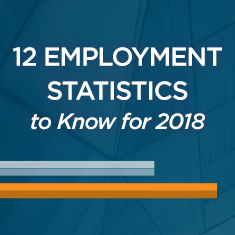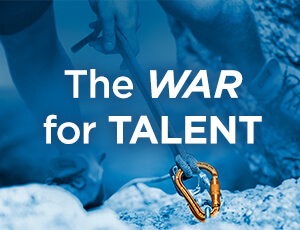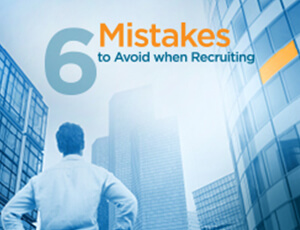The talent economy in today’s job market is low—demand is higher than supply. Because top talent is so difficult to find, the best way to compete in today’s job market is to develop a fast-acting, flexible talent acquisition process. Deliver an experience your own employees would want 75% of job seekers say a…
Continue reading ...
According to Indeed, a massive 61 percent of employers are expecting to hire more people in 2018 than they did in 2017. But expecting to do so and successfully executing on that plan are two different things. In our experience, whether it’s because of infrequent hiring or outdated procedures, few companies have a robust…
Continue reading ...
The new year brings new goals for every company—and if you’re planning to bring on new talent, it’s critical to understand the relationship between potential candidates and your company. There are many things that affect your ability to hire top talent, but understanding the job market, your candidate experience, and employee engagement will help you…
Continue reading ...
Employee engagement can help win the war for talent and increase profitability up to 21%. It’s a candidate-driven market, and the competition for great talent is fierce. To win the war for talent, organizations need to go beyond the resume to identify great people who align with culture and core values. In our…
Continue reading ...
- July 21, 2017
-
Accounting & Finance, Employers, Engineering, Hiring Best Practices, Human Resources, Information Technology, Manufacturing, Marketing, Operations, Operations, Talent Advisor
Recruiting is not merely a function of HR, it’s essential to the success of your organization. Without a well-defined strategy for recruiting talent, you run the risk of making inefficient and costly hiring decisions—up to $17,000 in lost productivity, compromised work quality, and turnover. To ensure better hires, you need a targeted recruiting strategy…
Continue reading ...
The art and science of recruiting with purpose goes beyond matching a skill set to a job requirement. It’s about understanding the position and its impact on the organization and industry—and finding the ideal candidate who aligns with the organization’s core values and the other employees. Brightwing’s 5 Tips for Purpose-Driven Recruiting…
Continue reading ...
Hiring new employees is extremely costly—don’t lose them after a few months! In today’s world, it’s important to pay attention to every step of the hiring process to secure successful new hires. Follow Brightwing’s top 4 strategies on how to hire and retain great employees. 1. Establish a High-Quality Hiring Process Go…
Continue reading ...
Company culture is everything. It turns an ordinary business into something extraordinary! but what exactly makes up a company culture? To keep it simple, we’ve narrowed it down to two main ideas: People and Vision. People We believe that people make all the difference! This is why our entire business is based on going beyond…
Continue reading ...
Acquiring talent for your organization is one thing, but knowing how to find the best of the best is crucial – especially in a candidate-driven market. Hiring Tips to Acquire the BEST Talent: Down to Business: Seven tips for better hiring Finding great employees can be the difference between your business stagnating, or…
Continue reading ...
U.S. hiring numbers are up once again this month. More than ever, companies must rely on employment trends that actually work to compete with the best. 4 trending topics to aide your hiring efforts: US hiring reaches 9-year high; job openings slip The Labor Department recently reported that 5.4 million people found jobs, a…
Continue reading ...











